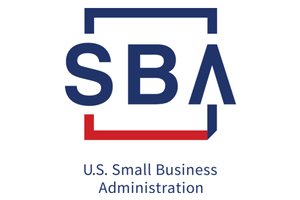Applications now open for the SBA Disaster Assistance program
The federal government granted Governor Kristi Noem’s emergency declaration request on Friday, adding South Dakota to a growing list of states that have been approved for Small Business Administration (SBA) assistance during the COVID-19 disaster.
The SBA’s Office of Disaster Assistance exists to support small businesses when natural disasters such as tornadoes, floods, fires, and more affect their operations. In most cases, disaster assistance is concentrated in individual locales, but with COVID-19, the SBA is tasked with serving businesses nationwide. As such, requests have been subject to longer wait times and delayed approvals.
After gathering surveys from businesses across the state, Governor Noem was able to assess the loss that South Dakota’s small business community is facing and justify her emergency declaration request, which was submitted on Tuesday, March 19.
Now that the application is available, South Dakota business owners can pursue up to $2 million each in Economic Injury Disaster Loans (EIDL). Jaime Wood, District Director for South Dakota’s SBA office, encourages businesses to take advantage of this opportunity to remain operational.

Jaime Wood, SBA District Director for South Dakota.
“It’s an infusion of capital that basically acts as a band-aid to allow small businesses to stay afloat,” she said.
Disaster loans through the EIDL program are long term and offer low fixed interest rates—under four percent. Wood warns business owners against putting their expenses on business credit cards or getting involved with predatory lenders. In both cases, she cites interest rates between 20 and 40 percent which have the potential to be devastating to a business’ recovery.
Who qualifies for the EIDL program?
Small businesses or nonprofits who have suffered losses from the economic impact of COVID-19 are eligible to apply for these loans. Wood encourages business owners to reach out to their existing lenders now to discuss their current economic situation. This could include requesting deferred payments or other forms of assistance during this period. Additionally, she advises business owners to seek out local grants and relief funding that may be available.
Free resources like the Small Business Development Center (SBDC) are also available to assist businesses in assessing their situation. The SBDC counselors can walk businesses through the financial implications of making changes in staffing, production, hours of operation, or even closing temporarily.
If these options are not sufficient, an SBA loan can be leveraged to fill in the gaps. Business owners can use EIDL funds for any operational expenses including rent, payroll, and lost revenue. Additionally, if owners or their employees fall ill and are required to quarantine, EIDL funding can be used to cover the incurred costs.
Applicants will need to be prepared with significant documentation to support their eligibility for the EIDL program, including three years of history and tax documentation, as well as six months of projections. If it’s a new business, the SBA will simply assess available history.
Accurate history and projections are critical for the SBA to be able to determine appropriate terms and interest rates. Once a business owner has gathered all of their information, they can create an account and apply online here.
In the ensuing weeks, the SBA will experience high volumes of applicants. Wood says the approval process depends on the business owner’s credit history and the completeness of the application. What often slows applications down is insufficient information, which is why she encourages businesses to go into the process fully prepared.
In addition to financial histories and projections, Wood says business owners must connect their business losses —actual or projected—to COVID-19. Because the SBA defines the disaster as beginning on January 31, 2020, downtrends in business must correlate with that time period. The end date at this point is unknown since the impact of COVID-19 is ongoing.
The goal of the EIDL program is to provide a bridge for small businesses during this time of uncertainty and economic slowdown. Wood encourages business owners to remain strong and do what it takes to innovate and provide value for customers.
“There are a lot of nuggets of hope and opportunity here. There will be an end, and we’ll get through this,” Wood said. “South Dakotans are resilient and innovative—together, we bounce back from disasters.”
In Sioux Falls, Wood believes small businesses can make their way through situations of this proportion with success.
“Sioux Falls is really on the cutting edge right now because of our resilience, our cohesive nature, and the great business atmosphere we have,” she said. “This community knows how to pull together in the face of adversity.”
For more information on SBA disaster assistance in response to COVID-19, or to apply for an economic injury loan, visit www.sba.gov/funding-programs/disaster-assistance. The South Dakota District Office can be reached via phone at 605.330.4243.